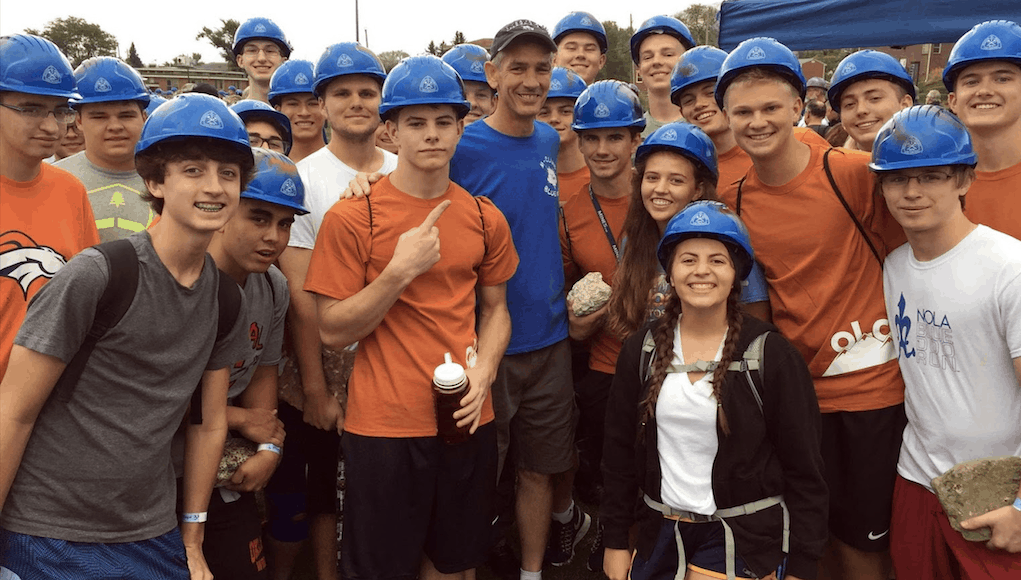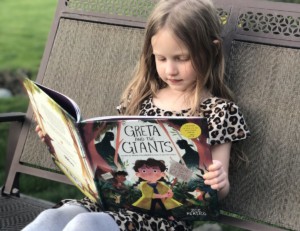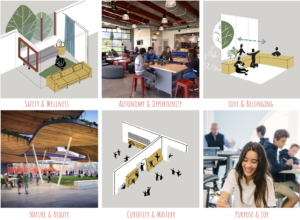10 Signs of Progress in Engineering for the Earth, Energy and Environment

“The value of engineering in the future isn’t how well students do calculation—that aspect of engineering has been replaced by computers,” said Dr. Paul C. Johnson.
He explained that in the past, engineering education was preoccupied with assessing individual proficiency in calculations. “In education today, particularly at Mines, we work on open-ended problems, more design-challenges, working in groups with the opportunity to work on teams competing in national engineering challenges. You can see a lot more connection between what you’re working on and what the impact of that work is on society.” (Listen to our conversation here.)
Colorado School of Mines (@coschoolofmines) is a 145-year-old state school long known as “The World’s Foremost College of Mineral Engineering.” It said so right outside my student housing in the 1970s. Like most engineering education of that era, my schedule was one plug and crank class after another with no integration or application.
Mines has been transformed into a global leader in education and research in engineering and science to solve the world’s challenges related to the earth, energy and environment. As Dr. Johnson, the 17th president of the leading engineering school is quick to note, Mines is still a very challenging environment but in ways that provide much better preparation for a changing world. Ten initiatives have been launched or accelerated during Johnson’s four-year tenure.
1.Extended challenges. To address increasing complexity in every field, Mines students engage in more extended and open-ended challenges. Some of these projects are incorporated into Design@Mines, a sequence of courses that develop creativity and problem-solving skills beginning with Cornerstone, an introduction to engineering and ending with Capstone where seniors work on open-ended design challenges.
2. Active learning. “Active learning beats passive learning when it comes to students understanding concepts and retaining information and skills,” said Dr. Tracy Gardner, a teaching professor in chemical and biological engineering. She uses a hybrid approach that combines flipped classroom and problem and project-based strategies that make class time super interactive. She assesses progress based on demonstrated mastery. “I’m excited about real assessment, in the real world,” added Gardner. She is moving toward assessments that include having students record videos of themselves explaining concepts.
In the same department, Dr. Michael Barankin also uses a variety of blended strategies with a focus on communication in and out of the classroom. Student projects begin by reaching out to industry, develop a plan, forming teams, developing progress reports and delivering a final presentation. Seniors in chemical engineering design whole plants with some ability to form their own team.
3. Support for transformed teaching. The shift from content transmission to critical thinking and problem-solving has been supported by the four-year-old Trefny Center. Director Sam Spiegel and his team lead five-week summer workshops and shorter sessions and classroom visits during the school year. Practice in more than 70% of Mines classrooms has been impacted by the training. The Faculty Senate recently adopted aspects of effective teaching.
Spiegel explained that he’s not pushing a specific pedagogical approach, but wants to help faculty design experiences appropriate to desired outcomes. “We want students working in higher cognitive loads—it’s not about calculations. It’s about what you do with it.”
The faculty recognizes that lots of content will be obsolete by the time students graduate. As a result, they are asking students to think and to write about thinking. Students write in Calculus class about how they got their answers. They are beginning to weave in data science across the curriculum. Barankin appreciates the mid-semester class visits and feedback from Trefny staff.
4. More diverse community. Mines is a lot more diverse than when I was there. More than a third of the incoming class is women, more than half from out of state and more than 20% underrepresented minorities. “We’re trying to make sure we fulfill our public mission,” said Johnson. “We would like our student body to reflect the community we serve.”
Themed learning communities (such as wellness, leadership, arts) help incoming freshman build connections and a web of support.
5. Out of class learning. “Half to two-thirds of learning takes place in classrooms,” said Johnson. “The rest takes place outside in professional societies, in competitions and in internships.
Johnson points to the DiggerLoop team which is designing high-speed sleds for low-pressure hyperloop travel. Johnson noted that this team exemplifies work that combines various forms of engineering into public work that matters.
Barankin teaches a six-week summer Field Session where he works full time with 40-60 students. During Field Session, students conduct nine labs and work on eight different teams of three. In a soon-to-be published paper, he explains, “This level of personal interaction and feedback and the ways in which they are conducted, build connections and community amongst all involved and motivate student engagement and cooperation.” He added that the summer experience is recognized by alumni and recruiters as highly effective at preparing students for the workplace.
6. Expanded context. Mines students are increasingly asked to consider a broader context for their work. The Payne Institute (@payneinstitute) provides insights on energy, environment, space and security with lectures, articles, visiting scholars, partnerships and collaborations across the Mines campus.
Compared to the old days, there is a much more deliberate structure to humanities, arts and social sciences at Mines. “Students that are high performing in math and science frequently have a strong connection to art and music so having those components is pretty important,” said Johnson.
The McBride Honors Program provides a well-rounded education that integrates the world of the liberal arts with that of science and engineering and considers societal context and policy implications.
For the fourth year in a row, Orediggers have qualified for the National Intercollegiate Ethics Bowl where teams compete to best argue and defend moral assessments of the most complex ethical issues facing today’s society.
7. Humanitarian engineering. Hundreds of of Mines students take courses in humanitarian engineering which brings together engineering and social science professors to transform the ways engineers are taught to think, define and solve problems with communities (see feature).
8. More entrepreneurial. Mines is a member of KEEN, a network of 44 leading universities infusing an entrepreneurial mindset in engineering education. The shared framework focuses on design, opportunity and impact.
Johnson said it starts with the university itself being entrepreneurial. Second, “You want to create an environment where faculty and students can be entrepreneurial, where it is not detrimental to getting a degree or tenure”
He wants a learning environment where students are going to pursue a project or an idea that makes them interested in additional skill sets. Johnson is building support for a central space on campus which Mines is calling the “Inno-Hub,” linked to an incubator and available for free form activities.
Mines has engaging alumni in special interest groups including entrepreneurship and innovation and leadership in social responsibility.
9. More sustainability. In the 70s, Mines was all about extraction. Today, the tagline is earth, energy, and environment. “Sustainability is a very important topic that our graduates need to understand,” said Johnson. There are now a variety of courses focused on sustainability and lifecycle assessment.
For those in the extractive industry, “Sustainability is not just an environmental issue, it’s an economic issue,” explained Johnson. “You have to look at yourself as a steward of the Earth asking yourself, what was the value of the property before and after I leave?”
10. Leaning into innovation. Mines faculty members are conducting cutting edge research across the earth, energy and environment agenda.
In energy, Johnson looks forward to breakthroughs in clean sustainable sources and storage. As the world shifts away from carbon-based energy sources, Mines will contribute to policy dialogs about emerging geopolitics and security risks around rare-earth elements critical to new energy systems.
Mines has emerged as a leader in advanced manufacturing for the aerospace industry. It is also home to ReNUWIt, the nation’s first NSF Engineering Research Center for water.
Johnson is excited about an expanding USGS presence on campus making Golden the epicenter for earth observations and related research.
Like MIT and Olin, Mines is incorporating computation across the curriculum.
Less Likely to Crow About Innovation
Inspired by great Bay Area high school science teachers, Johnson first attended UC Davis where (after figuring out it was basically free) he continued at Princeton for a PhD in chemical engineering. At Shell, Johnson worked on interdisciplinary teams tackling environmental problems.
Rather than moving into management at Shell, Johnson accepted an academic post at ASU in 1994. After teaching for 16 years, he became dean of the Fulton School of Engineering. During his five year tenure, the school tripled in size.
He learned a lot from ASU President Michael Crow about setting aggressive goals. Like Crow, he worries that the traditional model of higher education is not well suited for the lifelong learning needs of the innovation economy. Like Crow, Johnson works with a sense of urgency but he is unassuming and affable and quick to note the contribution of a talented faculty.
Mines will be 150 years old in 2024 and Johnson intends to use the next five years “making sure we’re positioned for another 150 years.
You can already see evidence of the new strategy with the launch of an online degree program and new interdisciplinary program like space resources (if you want to mine asteroids, Mines is the place to learn about it).
An ambitious facilities plan goes with the 2024 strategy but as impressive as all the new buildings are (and will be) the most encouraging thing about the transformation of Mines is what is happening inside classrooms—a culture of learning, real life problems, extended design challenges. It’s a place that is thinking deeply about preparing leaders for a complex world.
For more see:
- How to Be Employable Forever
- Blending Engineering, Entrepreneurial Mindset, and an Appreciation for the Variety of the Human Condition
- Learning Engineering: Merging Science and Data to Design Powerful Learning Experiences
This post is a part of the Getting Smart Future of Work Campaign. The future of work will bring new challenges and cause us to shift how we think about jobs and employability — so what does this mean for teaching and learning? In our exploration of the #FutureOfWork, sponsored by eduInnovation and powered by Getting Smart, we dive into what’s happening, what’s coming and how schools might prepare. For more, follow #futureofwork and visit our Future of Work page.
Stay in-the-know with innovations in learning by signing up for the weekly Smart Update.
This post was originally published on Forbes.









Oscar@energy assessment
This is really fits for environmental engineering, This is really good article. Engineering is one of the reasons for modernization and industrialization and its really good to know that engineers are thinking and innovating to save our planet like, waste disposal, saving water and the most important is to prevent climate change.